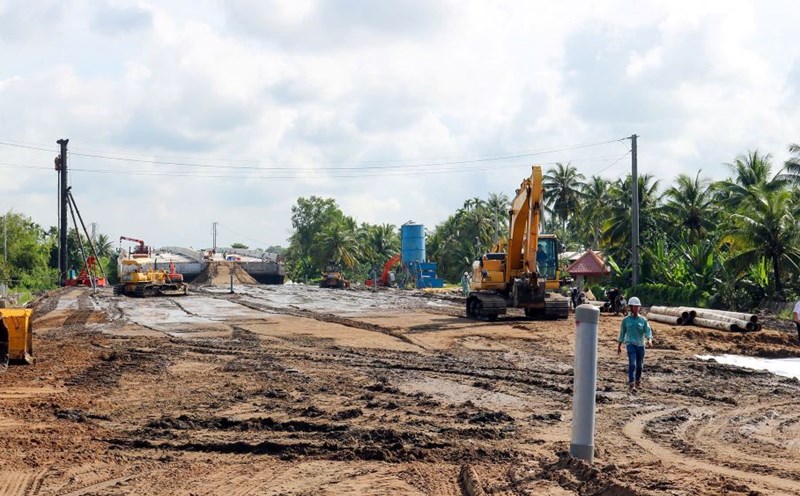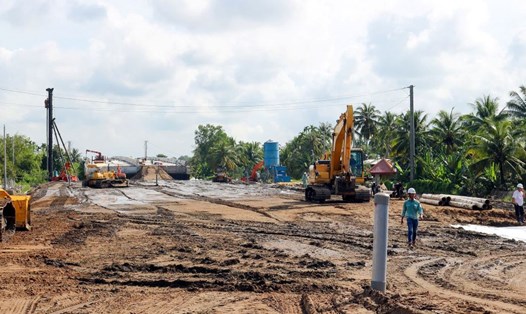On January 6, information from the People's Committee of Nghe An province said that it had just issued an official dispatch on researching, thoroughly understanding, and directing the implementation of using sea sand as filling material for traffic works.
The Provincial People's Committee assigned the Department of Natural Resources and Environment to preside over and coordinate with the Department of Transport and relevant departments, branches and units to regularly monitor and proactively report to the Provincial People's Committee on the contents under its authority, the implementation process and outstanding environmental issues arising during the implementation process.
Accordingly, in cases where it is mandatory to use sea sand as filling material, priority will be given to sections of the route in the current area with soil conditions with salinity equal to or higher than the salinity in the sea sand used as filling material and with water resource exploitation, agricultural production, aquaculture and seafood farming activities suitable for saline water sources.
For areas with soil conditions with a salinity lower than the salinity in the sea sand used for filling, less susceptible to the impact of landslides, subsidence and natural disasters, the use of sea sand for filling must ensure that the surrounding areas are not exposed to increased salinity from the filling activities through construction requirements and handling of filling materials.
Based on the farming and production conditions in the construction area where sea sand is expected to be used, the standards and regulations on salinity of agricultural land and aquaculture water surface as the basis for using sea sand for transportation projects, the experimental results of sea sand at the mine expected to be exploited, it is necessary to have measures to treat sea sand to reduce salinity, based on the salinity after treatment to determine the scope of use of sea sand, develop a plan, and provide technical instructions for construction before starting construction.
At the same time, it is necessary to ensure that the salinity treatment process does not impact or affect socio-economic activities in the area where the salinity reduction of the material is carried out.
In case the salinity cannot be treated to meet environmental requirements, it is possible to build the roadbed through technical solutions using waterproof materials to separate the sea sand from the surrounding environment. Limit and minimize the impacts that cause widespread salinity increase to neighboring areas, affecting people's lives and production activities.
Develop and strictly comply with the program for monitoring and supervising the soil, groundwater and surface water environment along the road corridor using sea sand and neighboring areas to ensure timely monitoring and detection of points of increased salinity and affected areas.
Stop construction activities, report to competent state agencies and implement specific remedial solutions to control and prevent the spread of saline water to neighboring areas, causing negative impacts on the environment, people's lives and socio-economic development activities.
According to Vice Chairman of Nghe An Provincial People's Committee Nguyen Van De, the most difficult problem in using sea sand as a filling material is the risk of environmental impact. Therefore, the province directs project investors using sea sand as filling material and related units to proactively develop feasible plans and promptly implement measures to handle environmental incidents during the pilot use of sea sand.











